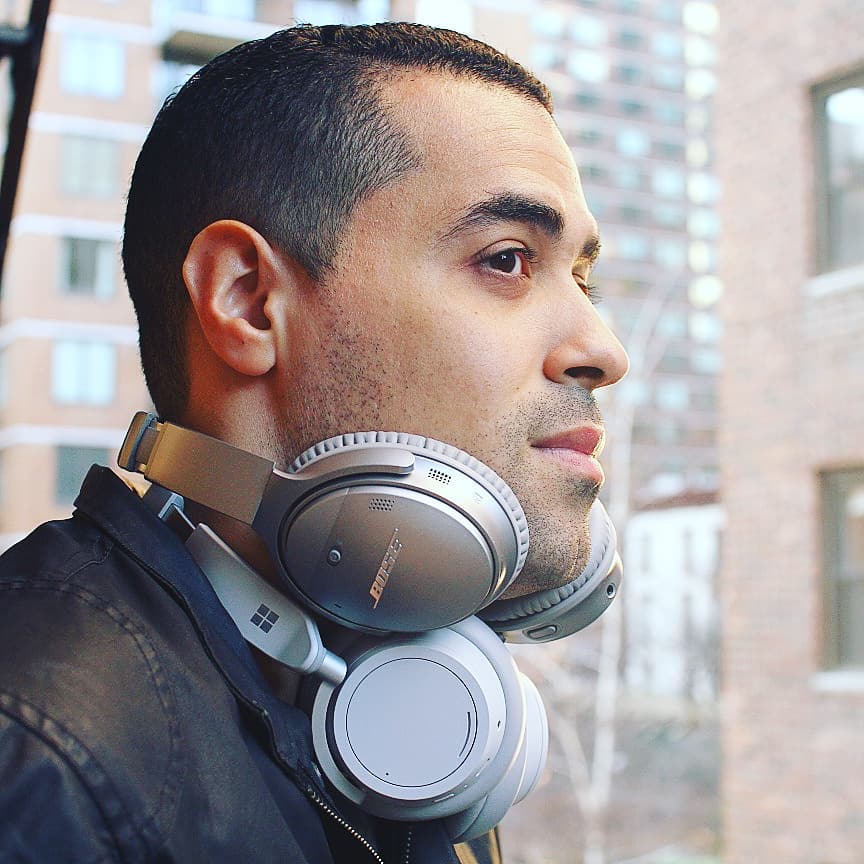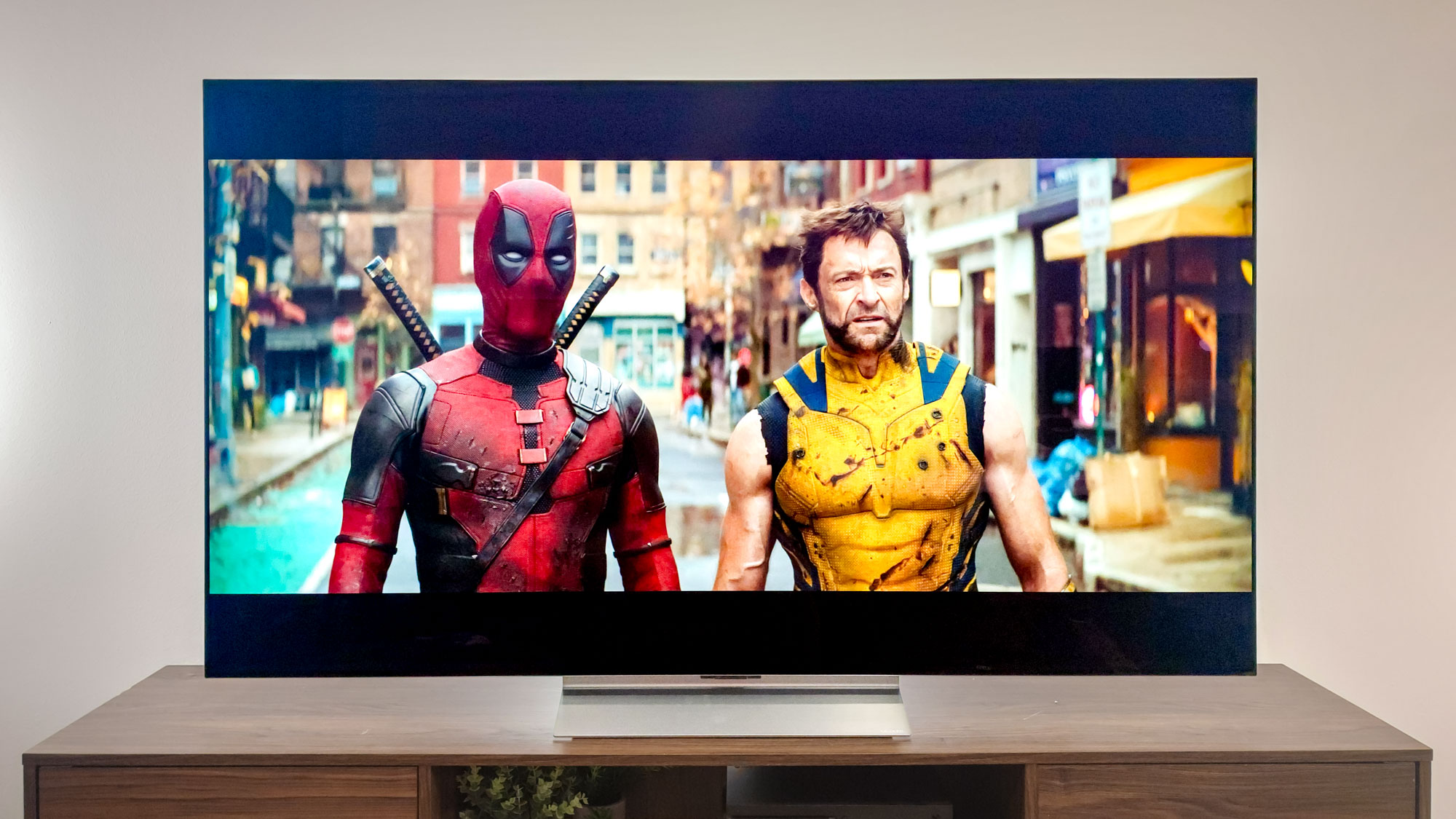Bose 700 vs. Sony WH-1000xM3: Which noise-cancelling headphones win?
The Bose 700 and Sony WH-1000xM3 go head to head, but only one reigns supreme
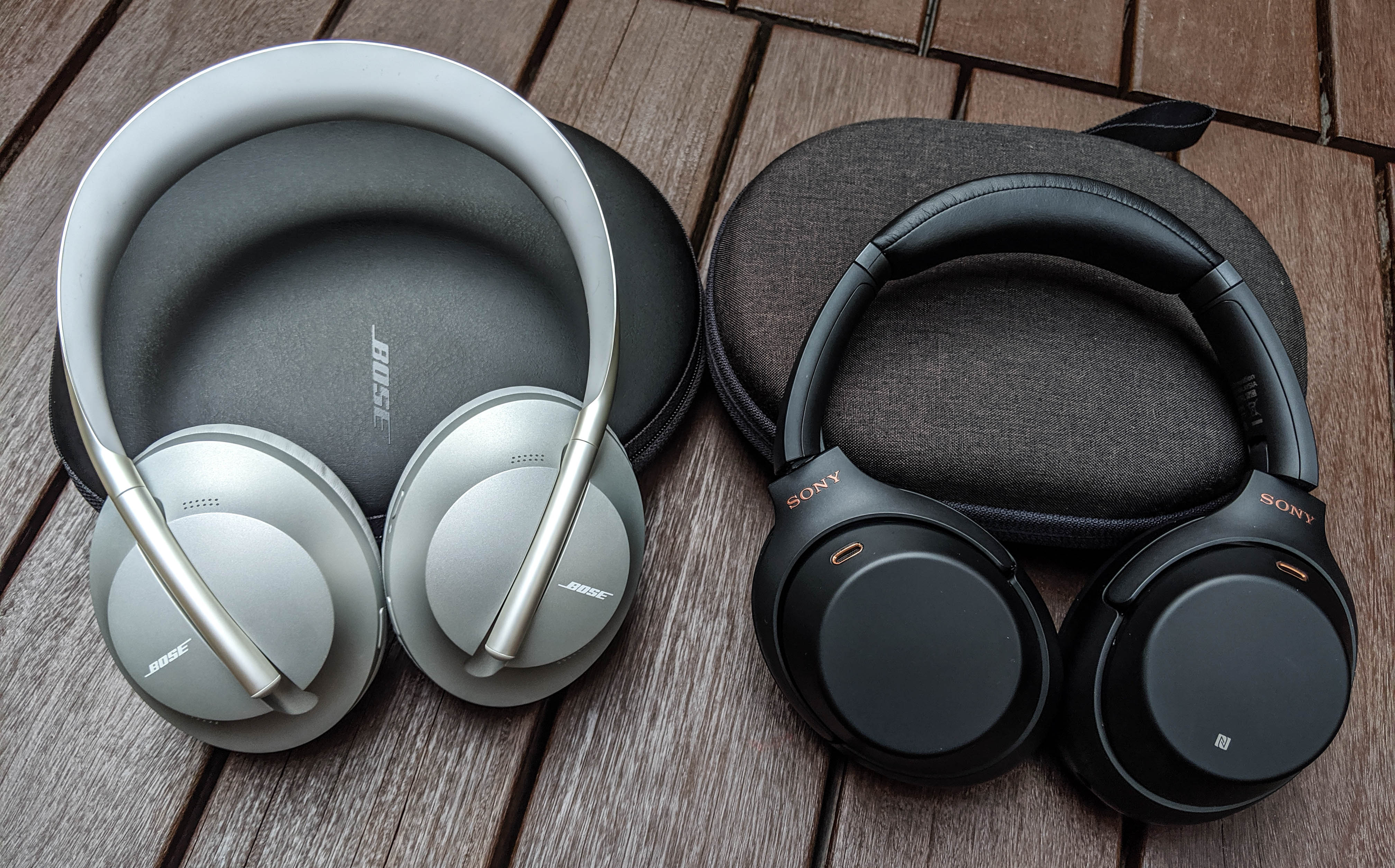
Editor's Note: Check out our Bose 700 vs Sony WH-1000xM4 face-off to see how Sony's latest headphones stack up.
The battle for noise-cancelling supremacy always seems to come down to Bose and Sony, and that continues in this Bose 700 vs. Sony WH-1000xM3 showdown.
Bose practically set the standard for active noise cancellation on Bluetooth headphones with its critically acclaimed QuietComfort 35 series. The company then showed it was capable of improving on perfection with the Bose 700, which welcomed some phenomenal hardware upgrades that took ANC and call quality to the next level.
- Read our Bose 700 review
- Check out our Sony WH-1000xM3 review
- Here are the best headphones you can buy
Sony set its own benchmark for sound with the widely popular WH-1000xM series. The WH-1000xM3 isn’t just the company’s flagship model – it’s a crowning achievement that combines champion audio together with stellar noise cancellation and strong battery life. Nothing really compares to it on a sonic level.
Yes, the Bose 700 currently takes the top spot in our best noise-cancelling headphones and best wireless headphones lists, but the Sony WH-1000xM3 looks to be the better value. Here is how these two sound-silencers compare.
Bose 700 vs. Sony WH-1000xM3: Specs
| Header Cell - Column 0 | Bose 700 | Sony WH-1000xM3 |
|---|---|---|
| Price | $399.00 | $279.99 (Originally $349.95) |
| Size | 8 x 6.5 x 2 inches | 10.4 x 2.9 x 7.3 inches |
| Weight | 9 ounces | 9 ounces |
| Colors | Black, Luxe Silver, Soapstone, Black/Copper (Apple Exclusive) | Black, Silver |
| Battery Life | 20 hours (NC on) | 30 hours (NC on); 38 hours (NC off) |
| Companion app | Yes | Yes |
Bose 700 vs. Sony WH-1000xM3: Price
Elite noise-cancelling headphones always come at a premium. The WH-1000xM3 remains the cheaper option, and recent markdowns during the holiday season make the headphones a more enticing purchase. But even at regular price ($280), the amount of functionality and sound that Sony provides is just too good to pass up.
If you’re one of those consumers who doesn’t mind spending big on top-tier performance, then the 700 is definitely worth the splurge. Bose made some significant changes to the spec sheet that certainly are deserving of your $400. On the other hand, that is asking a lot for any audio product.
Bose 700 vs. Sony WH-1000xM3: Design
Aesthetically, the Bose 700 looks sleek as hell and has some unique details that complement its ultramodern design. The entire frame is built from sturdy, pliable stainless steel to ensure the headphones don’t easily snap in half. What stands out most are the extenders, which are integrated into the ear cups through a track system that keeps the two components in place; adjusting them is simple. The arched headband that curves in near the ear cups looks pretty sexy, too.
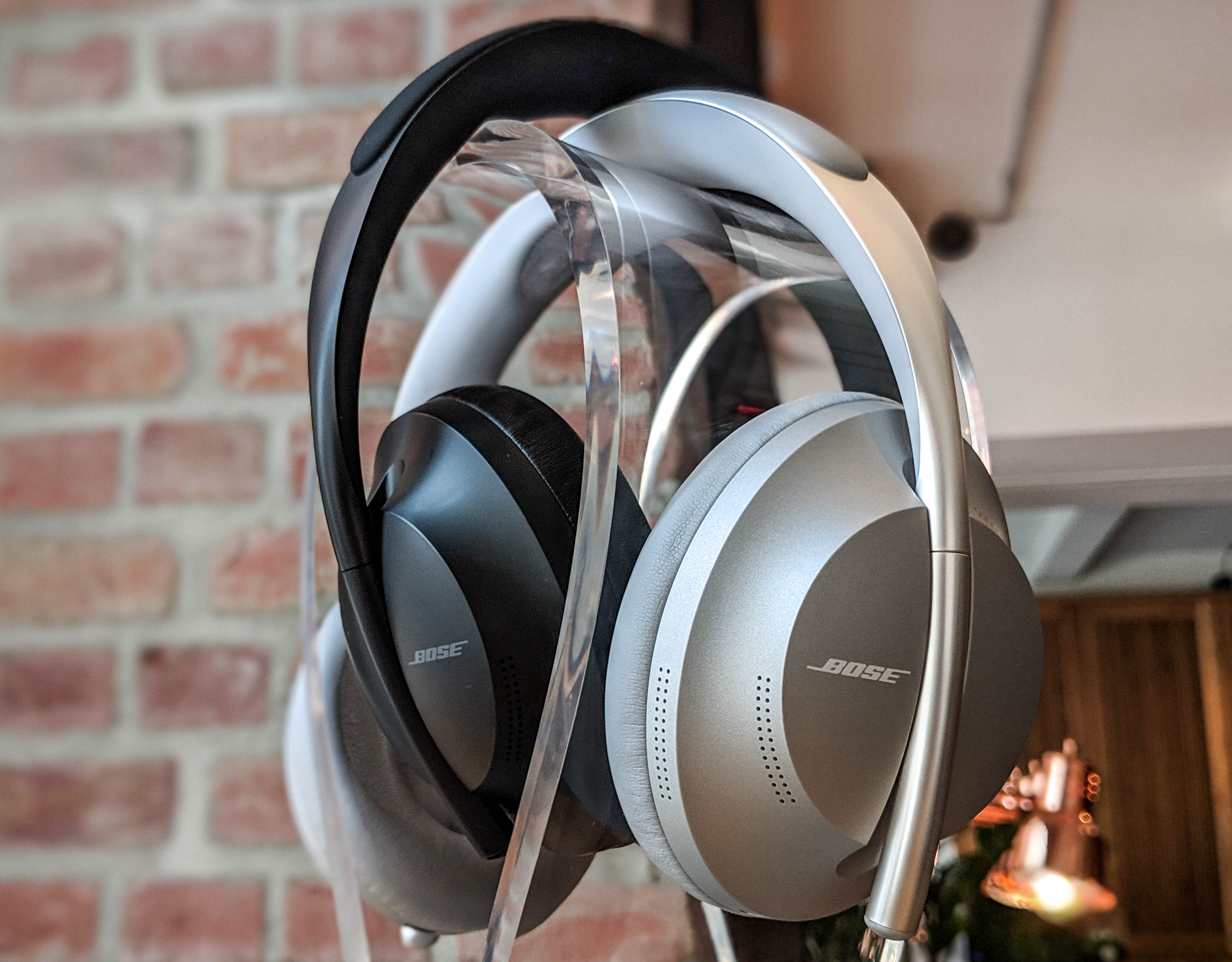
The WH-1000xM3 exudes its own finesse, covered in a durable plastic shell that resembles stainless steel. It is a step down from the faux-leather exterior that was used on the WH-1000x2, but still looks fancy compared to numerous other Bluetooth models. Something else that grabs your attention when unboxing these cans are the copper accents on each ear cup. They have a nice shine when exposed in sunlight. The leather headband and ear cups are a classy touch as well.
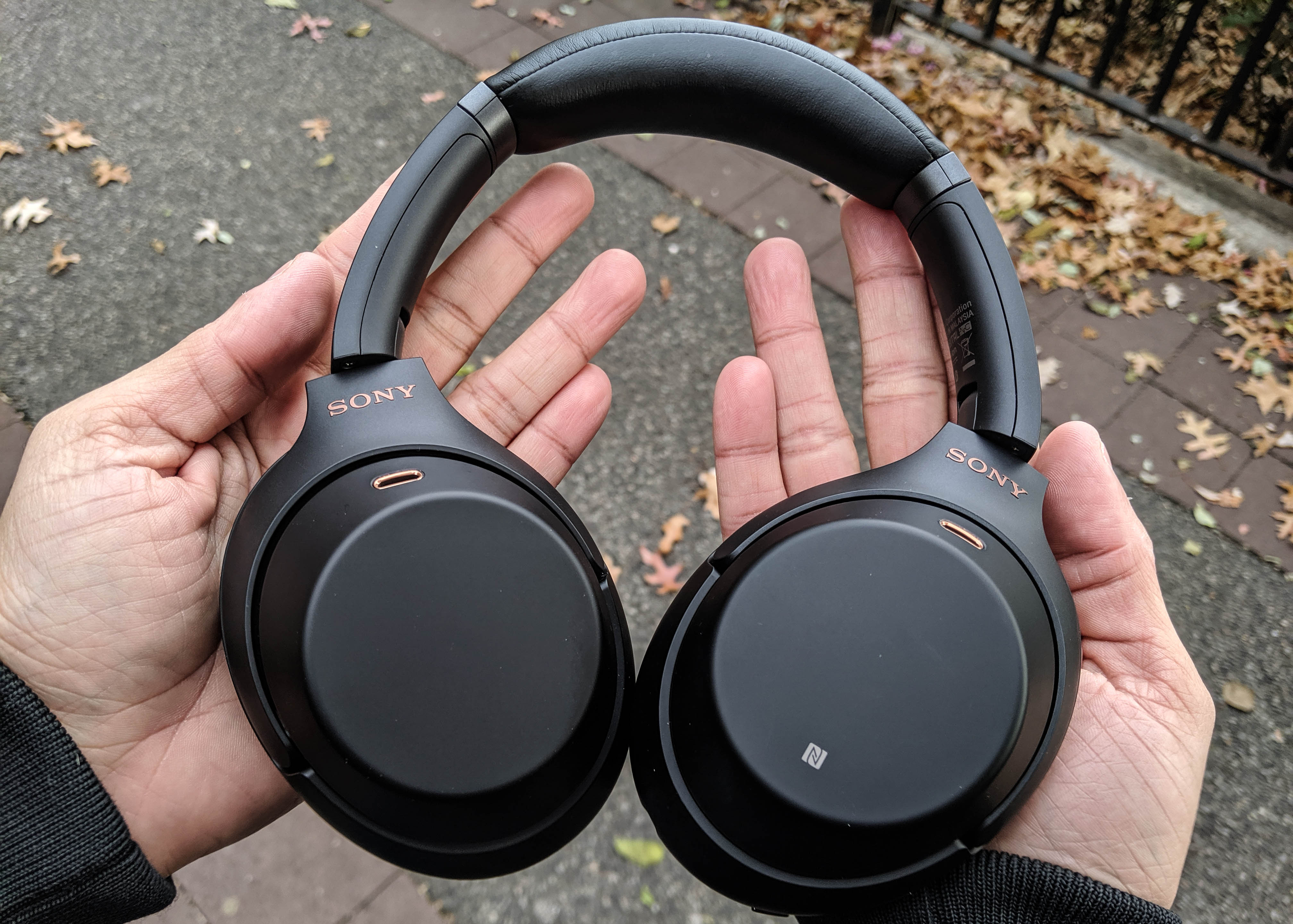
If you’re into accessorizing, then color preference may sway your decision. Bose has fancier options – Black, Luxe Silver, and Soapstone – each one available at all major retailers. There is one colorway that remains an Apple exclusive, Black/Copper, and goes for an extra $100. Why so much? Apparently, this version comes bundled with a charging case that promises 40 more hours of battery life. We can’t wait till Bose makes the 700 part of its Customized Headphones program.
Sony sticks to two bold finishes: Black and Silver. Ever after a year on the market, no limited-edition or special colors have been released to keep the design looking fresh.
Winner: Bose 700
Bose 700 vs. Sony WH-1000xM3: Comfort
There isn’t much of a difference in comfort between the two models. They each weigh 9 ounces, making them equally lightweight and portable. You can also swivel the ear cups on either unit to avoid any feeling of suffocation when worn around the neck.
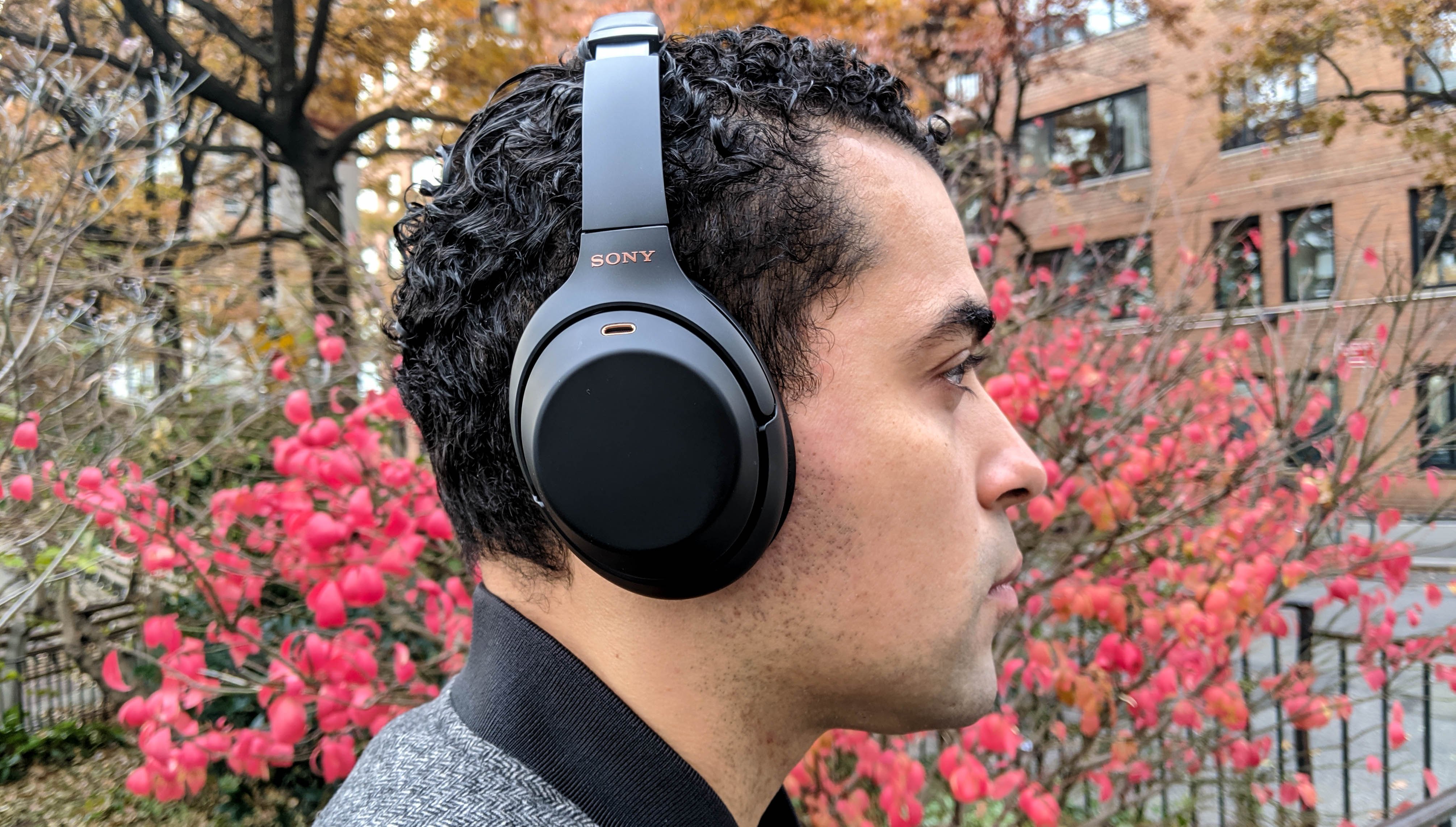
The WH-1000xM3’s lengthy extenders were designed to accommodate large heads. Those with smaller skulls can easily adjust them to achieve a relaxed, secure fit. The large oval cutouts of the ear cups afford plenty of room for your ears to breathe, while the soft padding encourages listeners to dabble in lengthy Spotify sessions; I sported the headphones for 2-3 hours daily without enduring any fatigue.
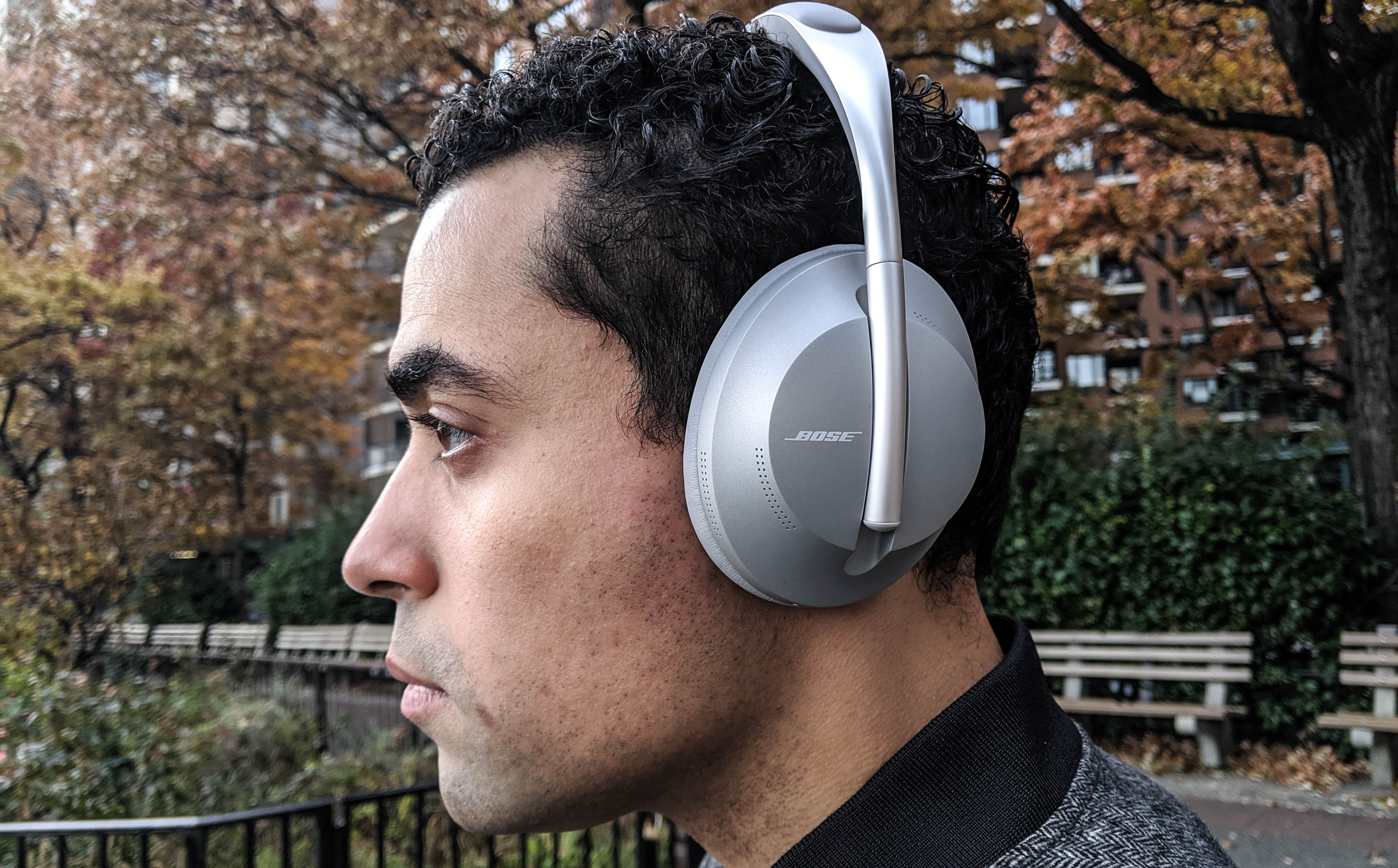
You get a good amount of comfort with the 700, as well. This is mainly attributed to the plush padding on the memory foam ear cups. It feels soothing on the skin and doesn’t press hard on your ears. The headband can feel a bit stifling on the skull, however, adjusting the extenders one setting higher makes a huge difference. Normally, this would cause slippage, but the weight distribution on these cans is superb to keep them stabilized when rushing through street traffic.
Winner: Draw
Bose 700 vs. Sony WH-1000xM3: Controls
Bose and Sony programmed their headphones with both physical and touch controls. The WH-1000xM3 offers a more fluid experience due to its intuitive touch panel that’s highly responsive to slide and tap gestures. You can tap the sensor to control playback and calls, while swiping up/down for volume and left/right for track navigation. The buttons below the left ear cup let you seamlessly toggle between listening modes (ANC and Ambient) and power on/off or pair the headphones.
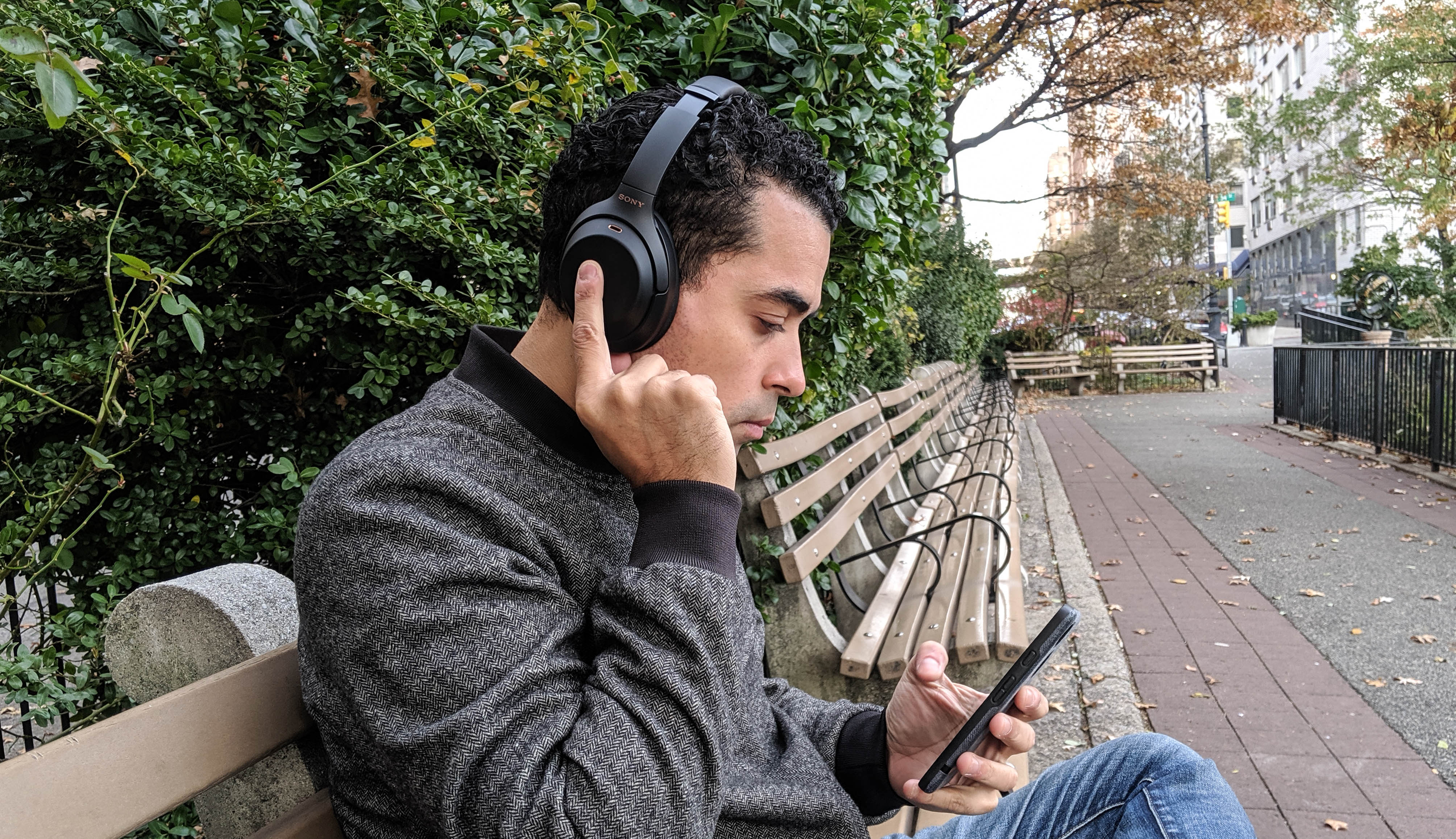
The Bose 700’s touch controls are not to be underestimated either. Managing playback (slide left/right) and volume levels (slide up/down) are a breeze. Tap gestures are just as simple to execute; a double tap will play/pause/answer a call, whereas a tap and 1-second hold declines a call. The physical buttons do work well and have a nice clicking effect when pressed that reassures your intended commands. My only issue is the extender coming down the middle of the right ear cup limits surface, making it difficult to locate the touch panel.
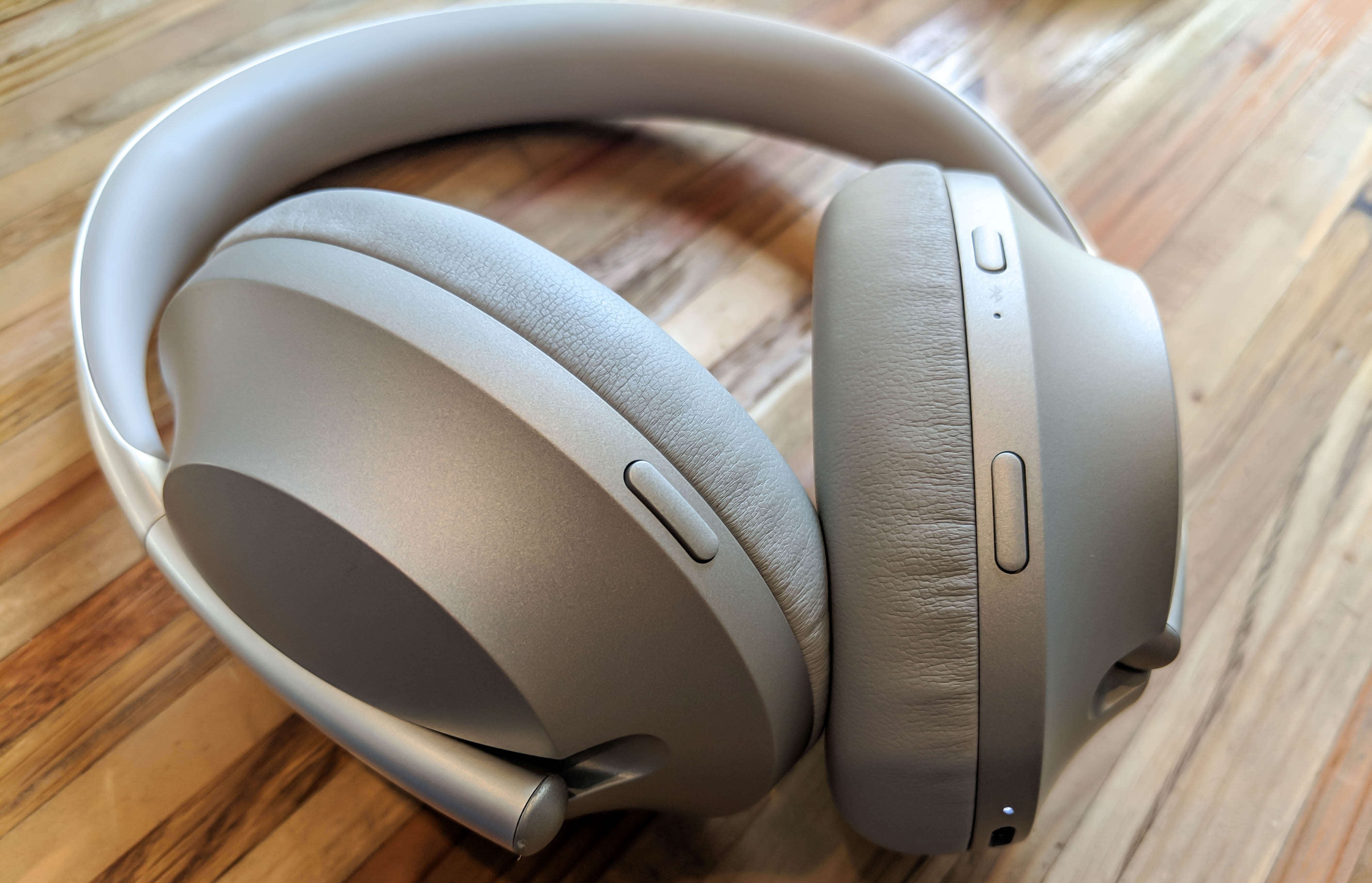
Digital assistant support works equally well on the two devices. Even better is that they support the big three: Alexa, Google Assistant, and Siri. I was fond of how quickly the WH-1000xM3 responded to voice commands, while appreciating the 700’s impeccable speech recognition.
Winner: WH-1000xM3
Bose 700 vs. Sony WH-1000xM3: Active noise-cancellation
When it comes to Bose and Sony’s noise-cancelling technologies, it’s almost too close to call. Nonetheless, the Bose 700 has the upper hand, thanks to Bose’s all-new adaptive microphone system.
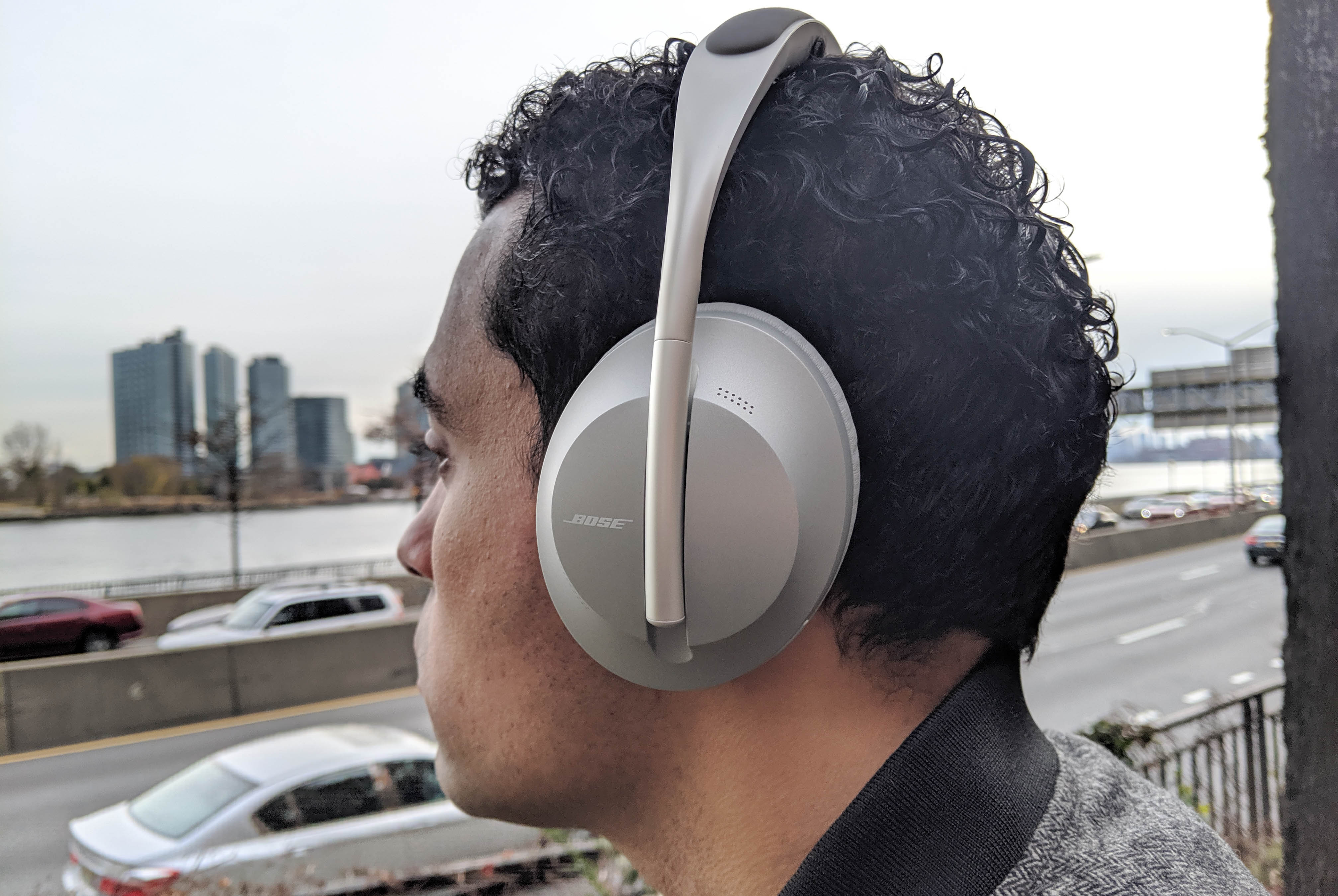
Eight individual mics are integrated into the 700’s design, six of which are used to filter out ambient sounds. The result is peaceful, distraction-free listening. It requires a lot of simultaneous blaring noises (e.g. walking through a construction site during the day) to pull you away from a favorite playlist. Besides that, the 700 is remarkable at silencing the typical commotion you encounter on a day-to-day basis. It felt relieving to put the world on mute, being oblivious to ambulance sirens and loud pedestrians. I especially loved how the headphones performed indoors; my fiancée’s Parks and Recreation marathon didn’t intrude on my Spotify chill time.
The WH-1000xM3 is Sony’s most successful attempt at noise cancellation. Powering these headphones is the resilient QN1 chip, which effectively blocks out nearby chatter, high-volume TVs, and plane engines. Very rarely will you notice loud rumblings (e.g. jackhammer, speeding dump trucks), as the sound is so dynamic on these headphones that only selective hearers will pick up on such disruptions. Where the deal breaker lies here is in wind resistance – the WH-1000xM3 simply lacks it.
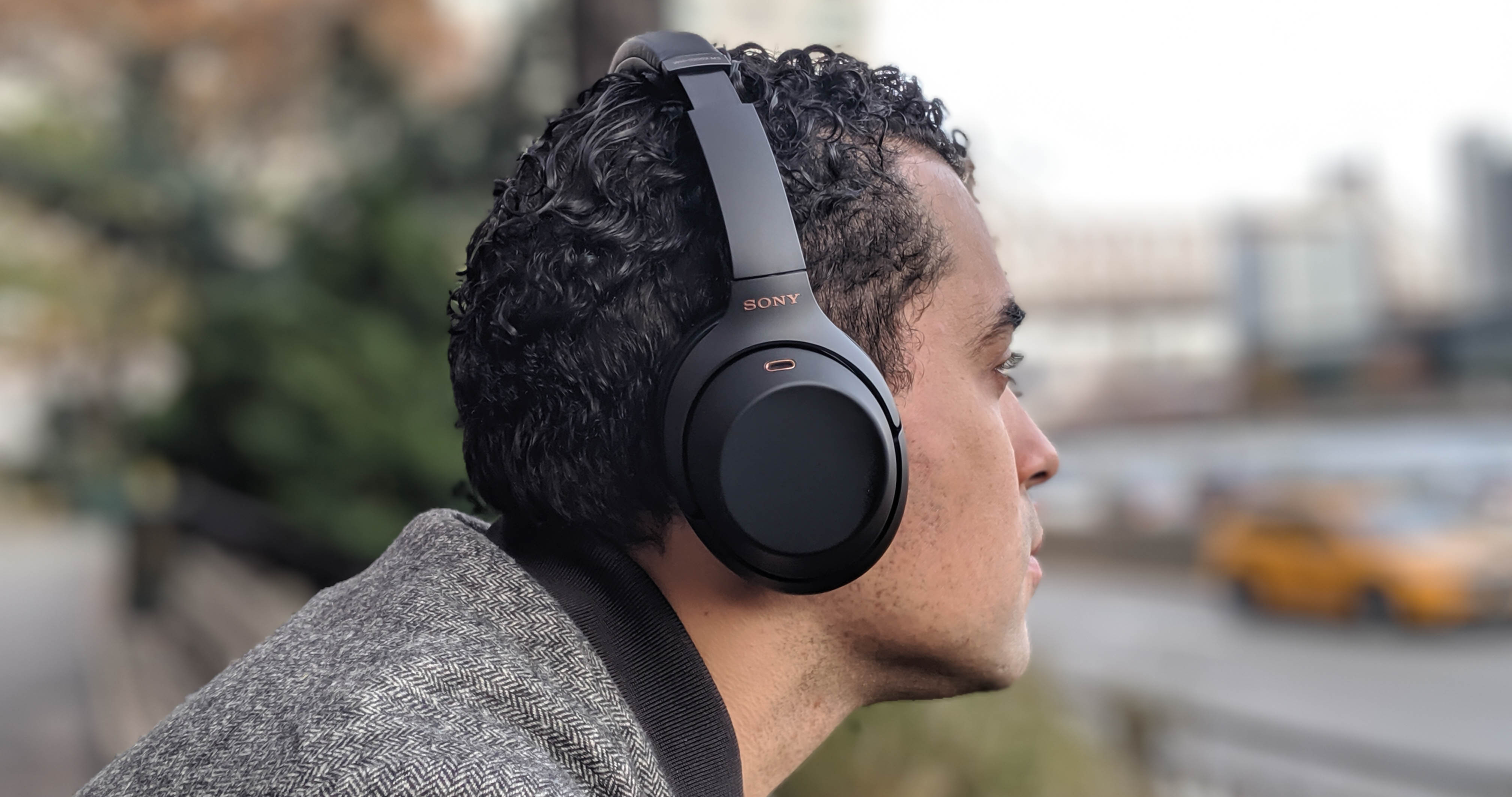
These two sets of cans also feature their own ambient listening modes, allowing listeners to hear what is transpiring around them. It comes in handy when you want to be aware of public announcements or eavesdrop on someone’s conversation. But, again, drafty conditions make the mode difficult to enjoy on the WH-1000xM3.
Winner: Bose 700
Bose 700 vs. Sony WH-1000xM3: Audio quality
The Sony WH-1000xM3 is a sonic beast that has yet to be slayed. Sony’s bass-forward profile still runs the show, but mids and highs are given just as much attention this time around, resulting in full, spacious sound.
Listening to Green Day’s “Longview,” the headphones did an incredible job of reproducing the drum-and-bass action of the track, while keeping Billie Joe Armstrong’s vocals clear throughout the rambunctious chorus. When jumping into more melodic, yet thump-filled productions like Mariah Carey’s “Inseparable,” it was amazing to hear how well the WH-1000xM3 balanced frequencies. The singer’s high notes sounded airy and vibrant, blending perfectly over the pounding snares and striking keys.
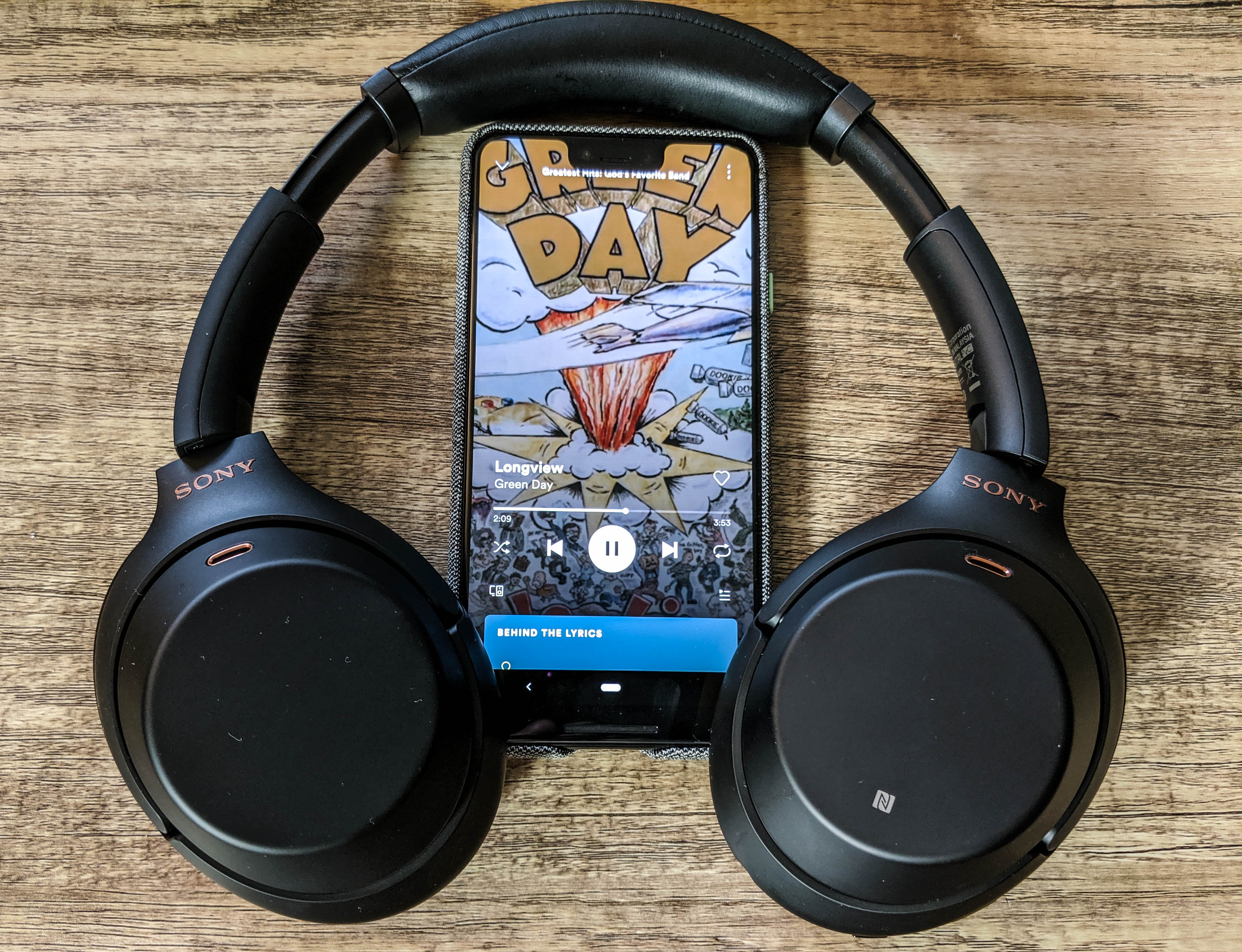
Audio on the 700 may not be the loudest, but it’s certainly the best that I’ve heard on any pair of Bose noise-cancelling headphones. The 700 produces crisp, precise sound that allows vocals to thrive on instrumental-heavy productions. Jazzy compositions like Ahmad Jamal’s “The Awakening” are a serene listen that fills your ears with such rhythmic detailing. Highs remain consistent throughout the song, in particular, the tapping hi-hat.
Where the WH-1000xM3 truly outshines the 700 is on lo-fi recordings. Pull up any song on Wu-Tang Clan’s debut album, Enter the 36 Chambers, and you’ll hear the distinctions in sound quality. With a record like “7th Chamber,” which sounds like it was produced in the sewer and is shrouded in distortion, the WH-1000xM3 cleaned up the muddiness without compromising the production’s booming resonance. Vocals were also accentuated to hear each verse more clearly.
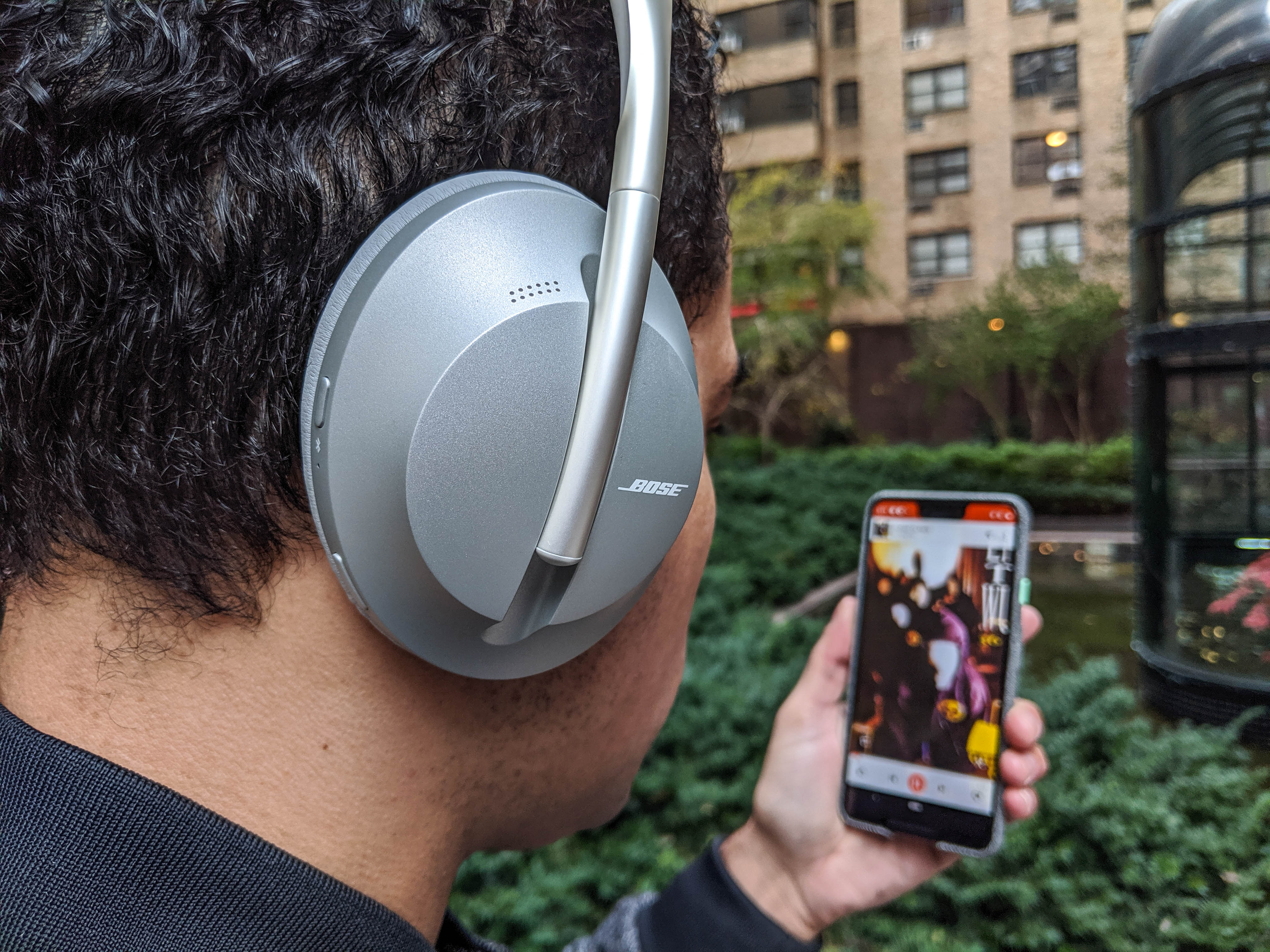
An aux cable comes bundled with each of these two models. The WH-1000xM3 receives a nice boost in bass and clarity. Lows take a minor dip on the 700, but it is something you probably won’t notice until toggling through the different ANC settings; the low end is more prominent at the highest level (10).
One area where the 700 outperforms the WH-1000xM3 is noise isolation. I was able to listen to music at high volume in the living room without bothering my fiancée. The WH-1000xM3 bled sound at mid-level volume and was so loud that she could hear the curse-filled dialogue and explosions during my laptop screening of Die Hard.
Winner: WH-1000xM3
Bose 700 vs. Sony WH-1000xM3: Apps and features
Extended functionality is a huge seller for any pair of wireless headphones. The Sony Headphones app doesn’t only allow for personalized audio, it also has plenty of features that enhance the listening experience.
The one that is most practical for users is the built-in EQ. Owners of the WH-1000xM3 can tweak frequency levels and create their own sound profiles. Granted, the default setting is already perfect as it is. There are also several programmed presets (Bright, Excited, Mellow, Relaxed, Vocal, Treble Boost, Bass Boost, and Speech) that lend themselves well to different music genres and media formats. Treble Boost is awesome for hip-hop songs, while Speech is perfect for podcasts.
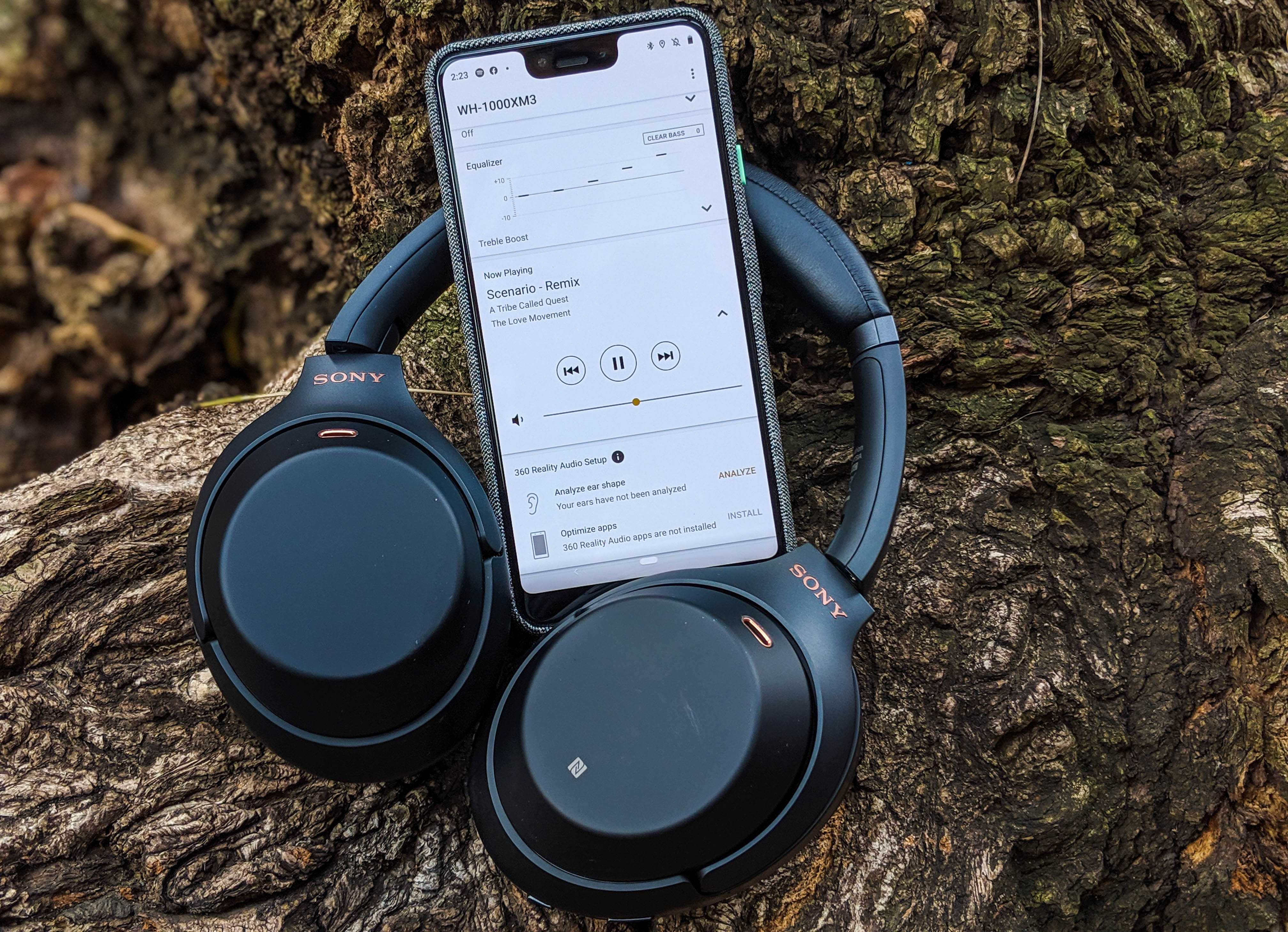
Sony’s app introduces clever ways to calibrate noise neutralization. Adaptive Sound Control and NC Optimizer are two features that take care of it for you by analyzing your movements and environments to optimize ANC. Another cool feature is Sound Position Control, which makes music sound like its coming from a certain direction, so you can hear it similarly to how you would in a live environment. It’s worth testing if you’re big on watching live concerts in VR.
Bose Music was specifically designed for the 700 and has a cleaner interface, along with more features than the older Bose Connect app. The ability to adjust and assign three preferred ANC levels on the headphones is great. The Self Voice mode is also useful for boosting voice clarity on phone calls. Other settings like a timer function, playback/volume controls, and voice assistant round out the app’s feature set.
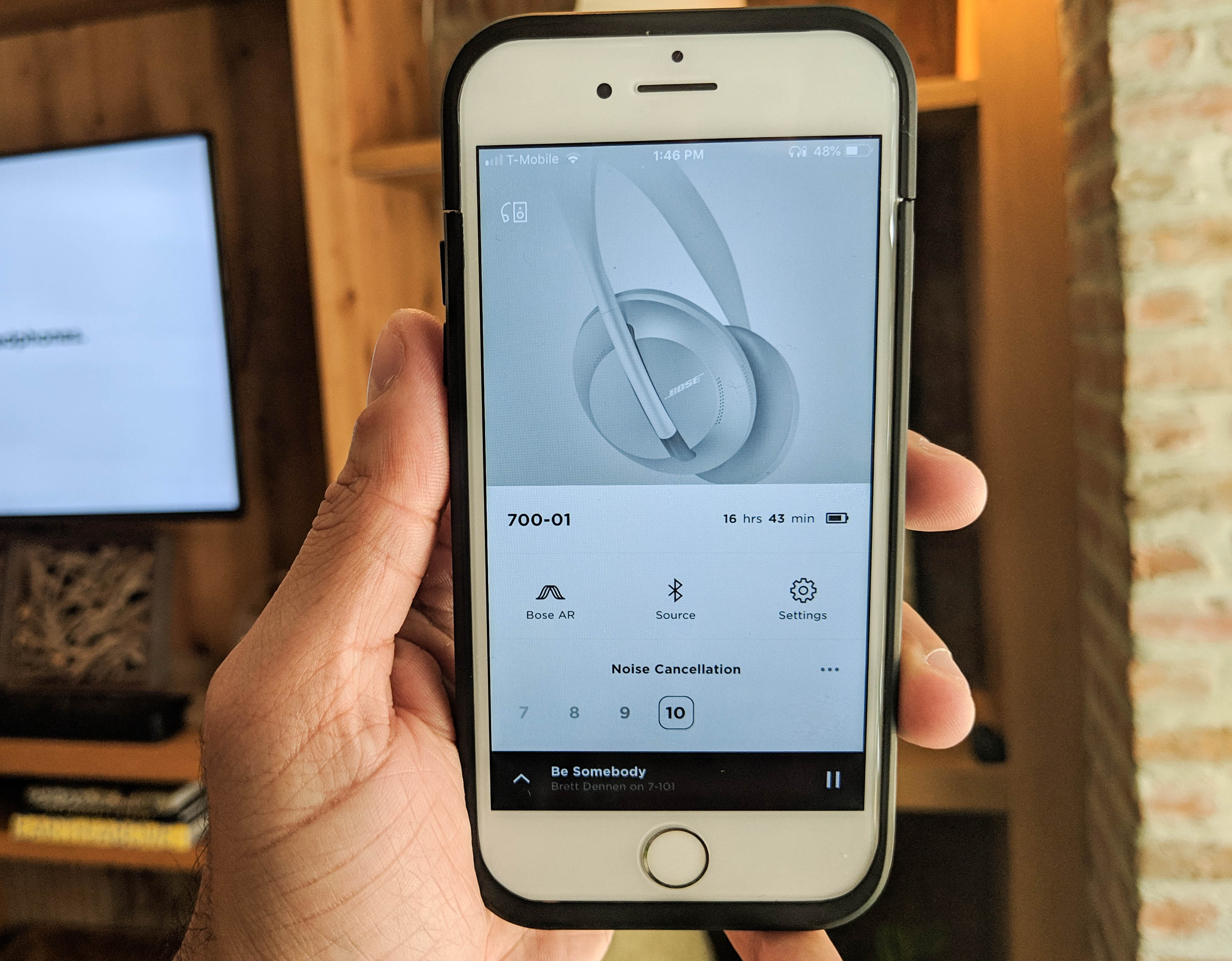
The 700 is also compatible with Bose AR, a series of apps that tailor audio content to your hearing by using the headphones motion sensors to track your head orientation and body movement. It sounds compelling and highly intuitive, but there isn’t enough content available yet to make this an everyday feature for users.
Winner: WH-1000xM3
Bose 700 vs. Sony WH-1000xM3: Call quality and connectivity
Bose headphones have always made reliable calling headsets. The Bose 700 was given special treatment to promise the best call quality possible. It employs four of its eight mics to filter out background noise, while amplifying your vocals. How well does it work? About as well as the noise cancellation. Mostly everyone I called was surprised at how loud and clear I sounded when chatting outside; wind resistance is strong on these cans.
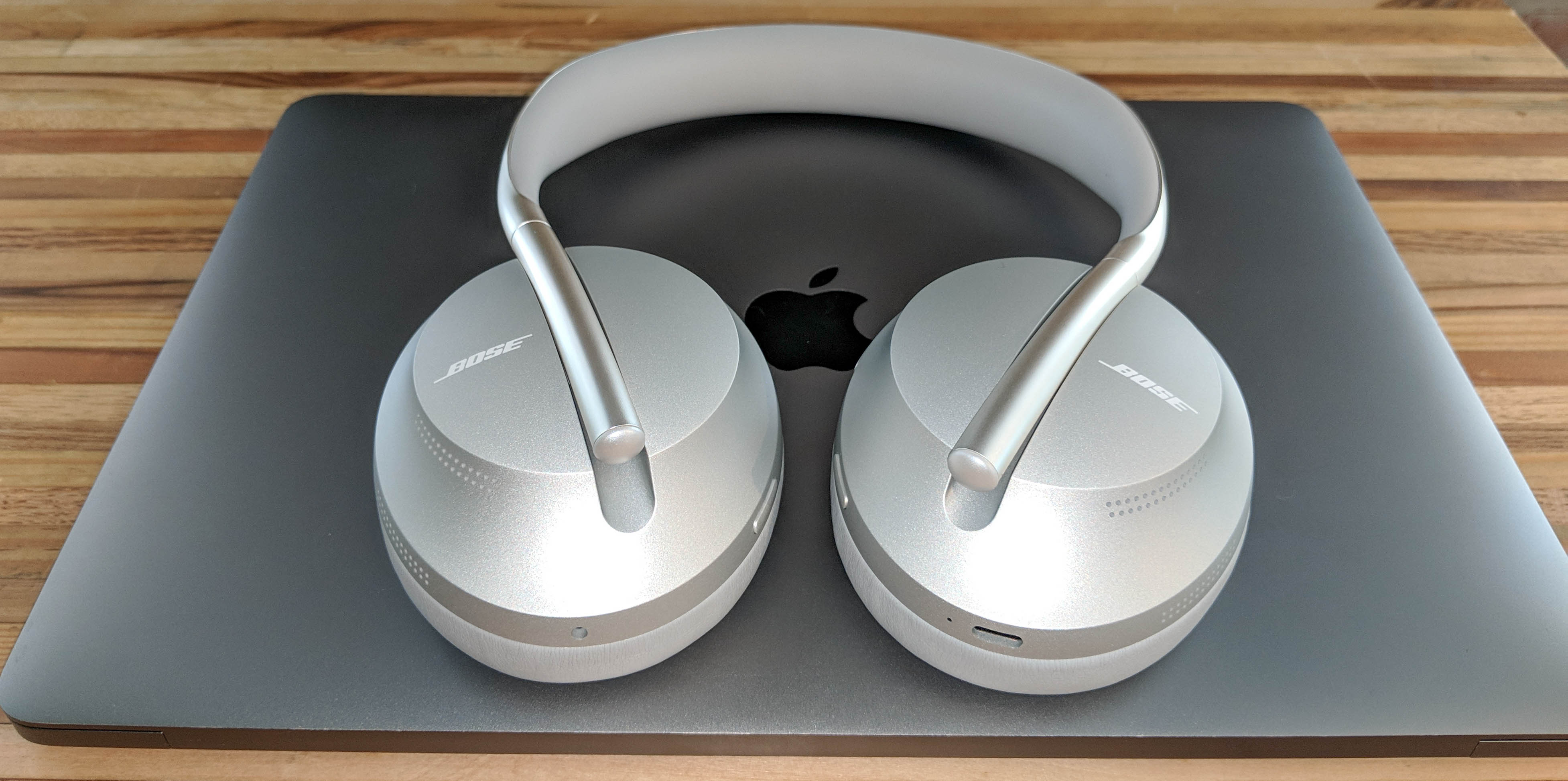
The 700’s hold up strong on the wireless end, too. I achieved about 35 feet of wireless listening when roaming my apartment. Dropout rarely ever occurred. Bose also added multipoint technology to the 700, meaning you can pair to two devices simultaneously without disconnecting.
As great as the WH-1000xM3’s mics perform with noise cancellation and voice commands, they fail to produce clear-sounding calls. People on the other end constantly complained about background noises. They also sounded extremely low, which made it difficult to communicate at times.
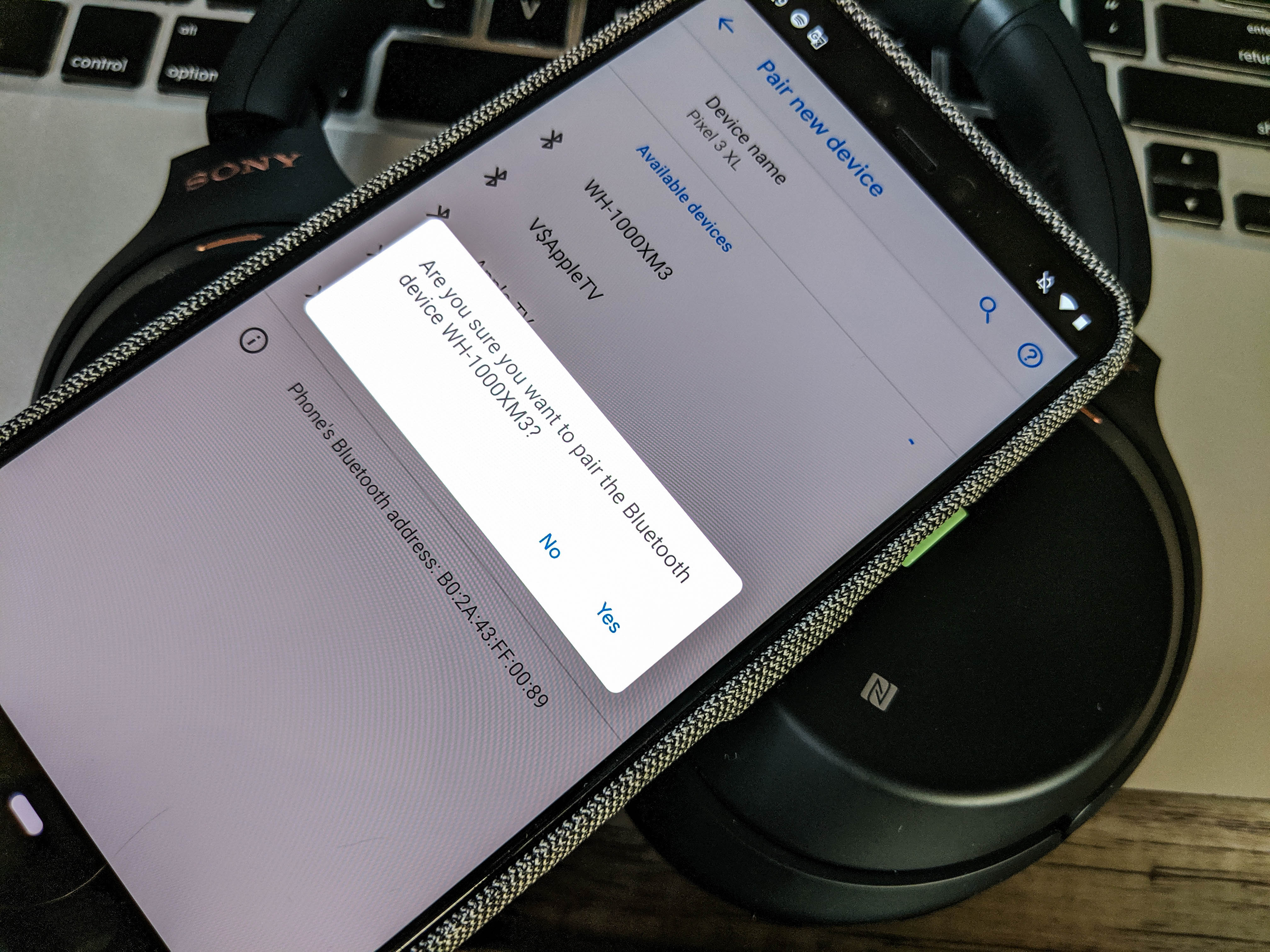
Thankfully, the WH-1000xM3 makes up for its poor call quality with strong connectivity. Bluetooth 4.2 grants the headphones strong wireless coverage: up to 33 feet. Audio never stuttered on my smartphone or laptop. NFC is available as well for instant pairing; placing the left ear cup on a compatible Android device does the trick.
Winner: Bose 700
Bose 700 vs. Sony WH-1000xM3: Battery life
Battery life between the two headphones is night and day, as the WH-1000xM3 blows the 700 out of the water with up to 38 hours of playtime. That number obviously drops when factoring ANC and volume into the equation (est. 30 hours), but to see headphones with such high-powered internals hold a charge for that long is impressive. I enjoyed a full week’s worth of use (3 hours daily) before recharging. Getting 5 hours of play time on a 5-minute charge is pretty sweet, too.
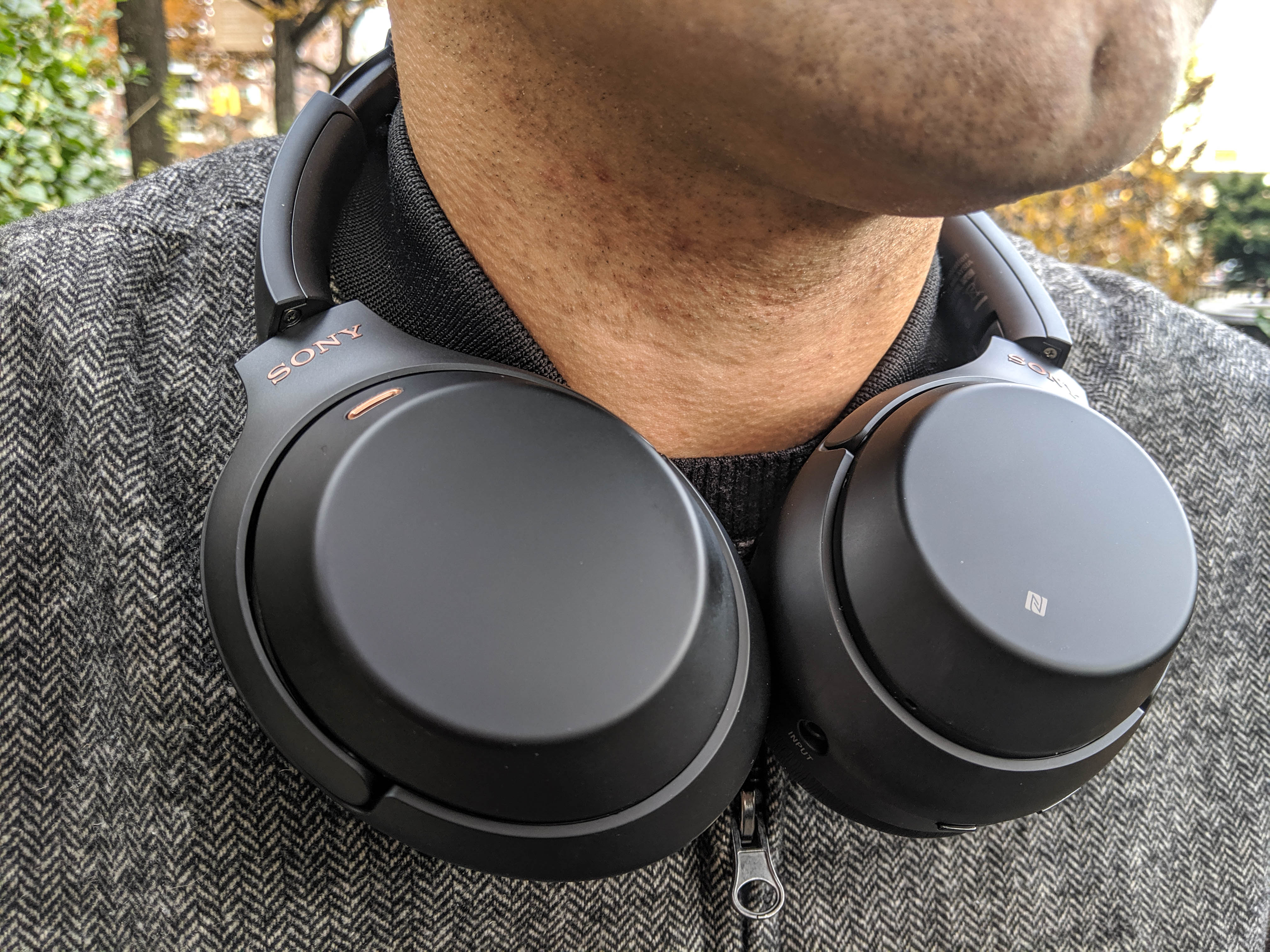
It’s somewhat puzzling to see Bose give the 700 the same battery life as the QC35 II. Getting 20 hours in ANC mode was a milestone about four years ago, but competitors like Jabra have caught up and nearly doubled that number; the Elite 85h nets 36 hours on a full charge. Sure, it’s enough to keep you busy on an international flight, but the battery should last longer on these next-gen headphones. At least you have quick charging available to get 3.5 hours on a 15-minute charge.
Winner: Sony WH-1000xM3
Bose 700 vs. Sony WH-1000xM3: Verdict
These are two of the finest-sounding headphones that money can buy, but only one can claim the noise-cancelling crown. The Bose 700 earns the win based on overall performance. It’s hard to compete against 10 levels of active noise cancellation that you can adjust on the fly to neutralize noise across different frequencies. Sound has been notably improved and call quality is flawless. The design is also gorgeous and trendy AF, especially the Apple edition with charging case.
| Header Cell - Column 0 | Bose 700 | Sony WH-1000xM3 |
|---|---|---|
| Design (15) | 14 | 12 |
| Comfort (10) | 8 | 8 |
| Controls (5) | 3 | 4 |
| Special Features and Apps (10) | 7 | 8 |
| Noise Cancelation (20) | 20 | 18 |
| Audio (25) | 22 | 23 |
| Call Quality and Connectivity (5) | 5 | 3 |
| Battery Life (10) | 7 | 8 |
| Total Score (100) | 86 | 85 |
Don’t think for one second that Sony’s cans are inferior to Bose’s latest creation. The WH-1000xM3 has battery life and sound, along with more practical features. And despite being a year older, its ANC technology holds up well against the more powerful 700. Unfortunately, that doesn’t make them the better pair of headphones.
Sign up to get the BEST of Tom's Guide direct to your inbox.
Get instant access to breaking news, the hottest reviews, great deals and helpful tips.
A lifestyle journalist with an affinity for consumer products, Alex has over a decade of experience and has worked with popular publications such as Complex, Thrillist, Men’s Health, Gear Patrol, AskMen, and Hoop Magazine. He currently focuses on audio, reviewing the most coveted headphones in the market for both Tom’s Guide and Laptop Magazine.
-
AussieMale I have no doubt that the Bose 700 is an amazing bit of kit and I firmly believe it is superior to the XM3 with respect to call quality. Rumour is the upcoming XM4 will address this shortfall.Reply
I recommend everyone weighing up the decision try both on because comfort should be your first priority and that will always be subjective. What isn’t subjective is the ANC. I’m disappointed to see that the reviewer has indicated the Bose is superior without any scientific basis. Of all the online reviews I’ve read which suggest the same, none have used any testing methodology that is independent with hard facts. The reviews that do use scientific sound tests all indicate the Sony is superior in noise cancellation. It undermines the credibility of the review. Don’t get me wrong, I’m not suggesting the Bose are bad. I doubt anyone in the market for premium ANC headphones will be greatly disappointed in either (Sony call quality aside). I just fail to comprehend how the key point about these headphones being ANC can be so poorly compared on what only can be regarded as anecdotal, subjective opinion. -
Fransz I was a Bose customer for ANC headphones but switched to Sony because of the shameful Bose's service always saying that the product was urepairable and you need to purchase a new one instead of servicing the customer. Even a dead bult-in battery is enough to throw away Bose earphones. So Bose can save their products, they're garbage to me.Reply
By the way, ANC Sony headphones are amazing; as I don't use them for taking calls I couldn't tell nothing about it, but noise cancelling and sound quality are suberb and way better than my previous Bose ones.
